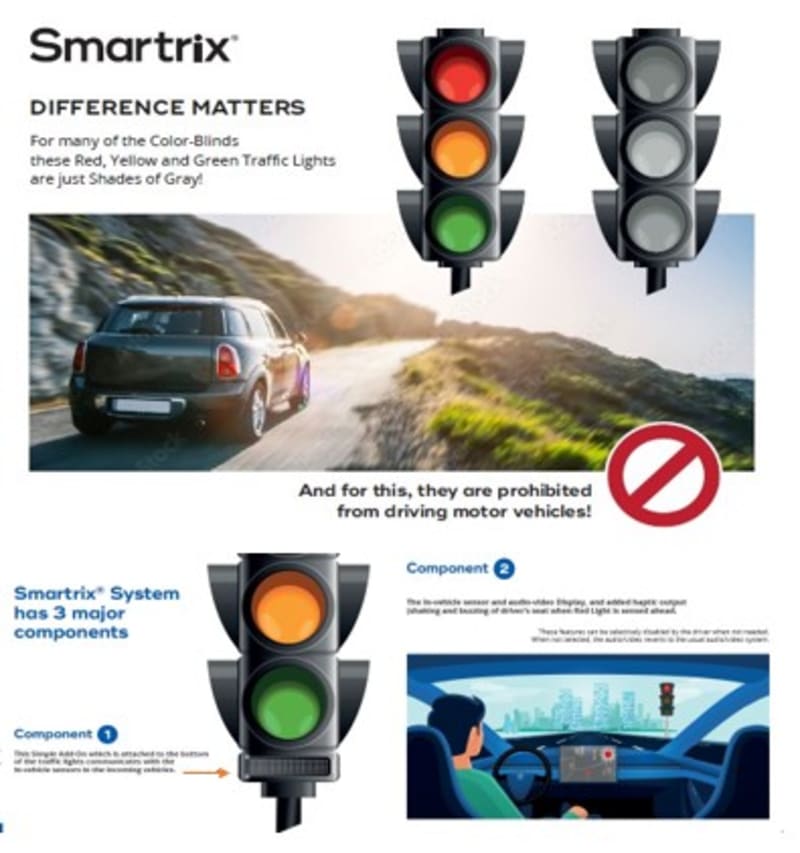
Driving requires quick decision-making and the ability to interpret visual cues, especially traffic signals. For individuals with color blindness, this can present a unique challenge. While advancements in technology have made driving safer for everyone, understanding how to navigate traffic lights effectively when experiencing color vision deficiency remains crucial. This article will delve into the complexities of color blindness and its impact on traffic light perception, providing valuable safety tips and adaptive driving techniques to ensure a secure driving experience.
This comprehensive guide will explore the different types of color blindness, explain how they affect traffic light recognition, and offer practical strategies for navigating intersections safely. We’ll also discuss available resources and technologies designed to assist color blind drivers.
Color Blindness and Traffic Lights
Color blindness, a condition affecting the ability to distinguish certain colors, can significantly impact an individual’s perception of traffic lights. This visual impairment occurs when cone cells in the retina, responsible for color vision, are either missing or malfunctioning. There are various types of color blindness, with red-green color blindness being the most common. In this type, individuals have difficulty differentiating between shades of red and green, posing a particular challenge when interpreting traffic lights.
The standard three-color traffic light system relies heavily on the distinction between red, yellow, and green. Red signifies “stop,” yellow indicates “caution,” and green means “go.” For color blind drivers, these colors may appear similar or indistinguishable, leading to confusion and potential hazards.
Understanding Traffic Light Signals
While traditional traffic lights present a challenge for color blind individuals, there are ways to interpret them more effectively.
Recognizing Red Lights
Red lights often appear as dark brown or dull orange to those with red-green color blindness. Look for the shape of the light – it’s usually circular and larger than other signals. Additionally, pay attention to the position of the light; red is typically at the top.
Identifying Yellow Lights
Yellow lights can appear greenish or yellowish-brown to color blind drivers. Focus on the brightness – yellow lights are generally brighter than green or red.
Differentiating Green Lights
Green lights may appear as yellowish-green or even brownish-green for individuals with color blindness. Look for the position of the light; it’s usually at the bottom. The shape and brightness can also provide clues, as green lights are typically circular and brighter than other signals.
Safety Tips for Color Blind Drivers
Implementing these safety measures can significantly enhance your driving experience:
- Know Your Limitations: Be aware of your specific type of color blindness and how it affects your perception of traffic lights.
- Practice Vigilance: Always approach intersections cautiously, even if you think you’ve correctly identified the light signal.
- Use Additional Cues: Rely on other visual cues like road markings, pedestrian signals, and the movement of surrounding vehicles to confirm the traffic light status.
- Maintain a Safe Following Distance: Allow ample space between your vehicle and the car in front to provide more reaction time.
Adaptive Driving Techniques
Consider these techniques to improve your navigation of intersections:
- Scan Ahead: Look further down the road to anticipate upcoming traffic signals and adjust your speed accordingly.
- Listen for Signals: Pay attention to audible cues, such as pedestrian crossing signals or announcements from traffic control systems.
- Use Mirrors Effectively: Regularly check your rearview and side mirrors to be aware of vehicles approaching from behind.
Resources for Color Blind Drivers
Several resources are available to assist color blind drivers:
- Driving Schools: Many driving schools offer specialized training programs for individuals with color blindness.
- Vision Specialists: Consult an ophthalmologist or optometrist specializing in vision disorders to discuss your specific needs and potential solutions.
- Assistive Devices: Explore adaptive technologies, such as traffic light signal converters or smartphone apps that provide audio alerts for different light colors.
Conclusion
Driving safely with color blindness requires awareness, vigilance, and the utilization of adaptive techniques. By understanding the challenges posed by traditional traffic lights and implementing the safety tips outlined in this article, color blind drivers can confidently navigate roadways and ensure a secure driving experience. Remember to utilize available resources, practice safe driving habits, and always prioritize your well-being on the road.
